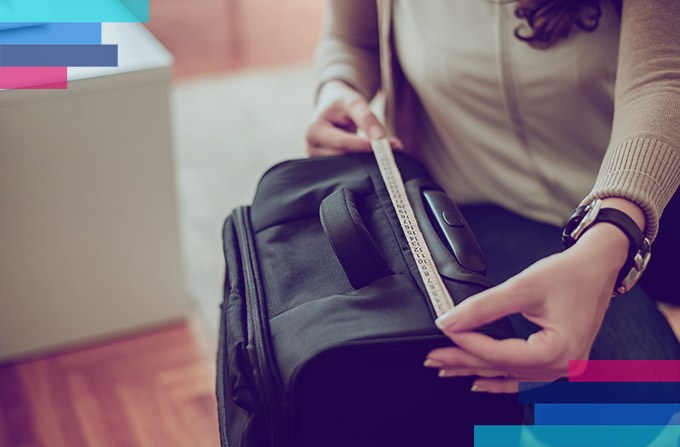
You’ve picked the destination and booked the air tickets… but what about the luggage? Before you pack a suitcase or a bag, you should check if it meets the size and weight limits. What are the maximum dimensions for checked baggage? What is the allowed hand luggage weight? Airlines apply their own policies about size, weight and number of items of baggage permitted, so you should always confirm the baggage allowances before departure. Otherwise, the cost may be higher than expected.
Hand luggage size allowances vary between airlines. For example, baggage size limits imposed by Ryanair are almost the same as for Wizz Air, but there is a difference of a few centimeters. It seems like nothing major, but it may cause problems at the check-in desk – if your carry-on bag exceeds the limits, it will be put in the hold and you will be charged an oversize fee.
In general, you should be able to place your carry-on luggage under the seat in front of you or in the overhead racks. Each carrier has its own policy on the size and weight of hand luggage. You should also remember that hand luggage dimensions include any bits that stick out, such as the handle, pockets, wheels, etc. Usually, your carry-on luggage should weigh no more than 8-10 kg.
Checked luggage dimensions
If you are not satisfied with the hand baggage allowance, you can always purchase hold luggage. Its size and weight should meet the requirements of your airline but no less important is the amount of luggage allowed to be taken. The number of bags you can put in the hold depends on your travel class. The final price is determined by several factors, such as the number of items, their weight, the dates of your flight (during the high-season the cost will be higher), as well as the route.
Visit our website to check the dimensions and weight limits for both checked-in and hand baggage imposed by the different airlines.
What bag should you buy?
If you are interested in getting the right suitcase to travel with, a number of factors should be considered. First of all, check your carrier’s policy on the size and weight of the luggage. Consider also how often you’re going to fly. Occasional travelers can select slightly cheaper bags or wheelies but frequent flyers who travel several times a month, should go for a high-quality hard-shell suitcase.
There is a wide selection of luggage on the market – from hard-sided to soft-sided (make sure your suitcase is equipped with a lock system and spinner wheels). Which one would be the best? If you’re looking for a cabin bag, choose a soft rucksack style suitcase – it’s easier to stuff it into the overhead compartment. Soft shoulder bags or backpacks are even easier to squeeze. You might also like semi-hard suitcases offering more protection for your belongings. They are, however, a bit heavier which is a disadvantage when every pound counts.
If you’re going to travel with checked luggage, you would be better off going for a hard-shell suitcase as it’s definitely less fragile (remember about baggage handlers at the airport throwing bags with no mercy). The best option would be a hard-sided luggage made of polycarbonate with corner guard reinforcements providing extra protection. Also don’t forget to keep your valuables under lock and key with a TSA lock or a padlock for your suitcase.

